2.1.6 Cell division, cell diversity and cellular organisation
1/19
There's no tags or description
Looks like no tags are added yet.
Name | Mastery | Learn | Test | Matching | Spaced |
|---|
No study sessions yet.
20 Terms
Cell division
Eukaryotic → cells enter the cell cycle and divide by mitosis or meiosis
Prokaryotic → cells replicate by binary fission
Viruses → Do not undergo cell division as they are non-living
The cell cycle
3 Stages
Interphase (G1, S, G2)
Nuclear division (mitosis or meiosis)
Cytokinesis
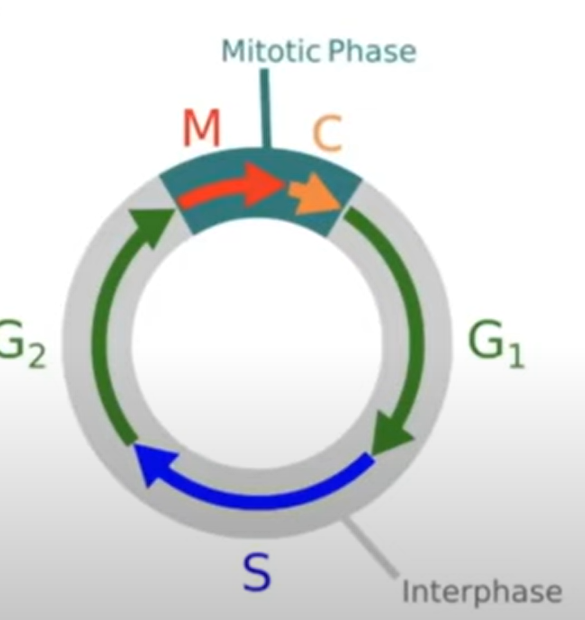
Interphase
G1
-Protein synthesis occurs to make proteins involved in synthesising organelles
-The organelles replicate
-Cell is checked that it is correct size, has the correct nutrients, growth factors and that there is no damaged DNA. If a cell doesn’t pass these checks replication will not continue
S phase
-DNA is replicated
G2
-Cell continues to grow, energy stores increase and the newly replicated DNA is checked for copying errors
Mitosis
Creates 2 genetically identical diploid cells and is used for growth, tissue repair and asexual reproduction in plants, animals and fungi.
Mitosis has 4 key stages:
Prophase
Metaphase
Anaphase
Telophase
Prophase
The chromosomes condense and become visible. In animal cells, the centrioles separate and move to opposite poles of the cell
The centrioles create spindle fibres which are released from both poles to create a spindle apparatus - these will attach to the centromere and chromatids on the chromosome in later stages.
Plants have a spindle apparatus but lack centrioles.
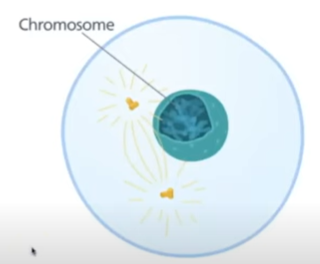
Metaphase
The chromosomes align along the equator of the cell
The spindle fibres are released from the centrioles and attach to the centromere and chromatids.
The spindle assembly checkpoint occurs in this stage. There is a check to ensure every chromosome has attached to a spindle fibre before mitosis can proceed into anaphase
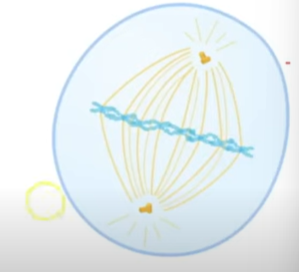
Anaphase
The spindle fibres start to shorten and move towards the centrioles and pull the centromere and chromatids they are bound to towards the opposite poles.
This causes the centromere to divide into 2 and the individual chromatids are pulled to each opposite pole.
This stage requires energy in the form of ATP which is provided by respiration in the mitochondria.
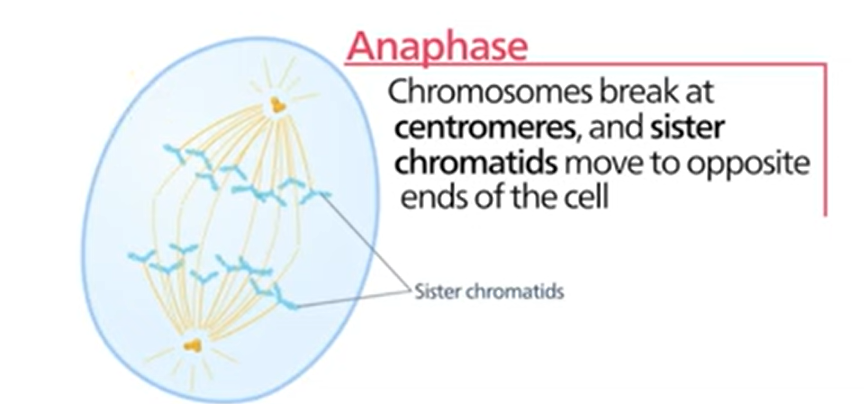
Telophase
The chromosomes are now at each pole of the cell and become longer and thinner again
The spindle fibres disintegrate, and the nuclear membrane reforms
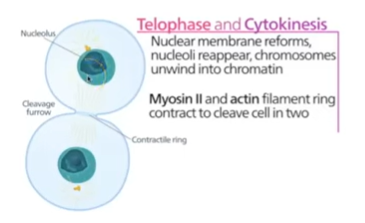
Cytokinesis
The cytoplasm splits into 2 genetically identical cells.
In animals, a cleavage furrow forms in the middle of the cell and the cytoskeleton causes the cell membrane to draw inwards until the cell splits in two
In plant cells, the cell membrane splits into 2 new cells due to the fusing of vesicle from the Golgi apparatus. The cell wall forms new sections around the membrane to complete the division into 2 cells.
Observing Mitosis
The stages of mitosis are visible under a light microscope in onion and garlic root tips
A thin slice of the root tip is placed on a microscope slide and broken down with a needle
A stain is added to make the chromosome visible and the cover slip is pushed down. This is to squash the tip to achieve a single layer of cells so light can pass through
The mitotic index can be calculated by counting how many cells are visible in the field of view and the number of cells visible that are in a stage of mitosis
Then the following formula can be used:
Mitotic index=the number of cells in mitosis / the total number of cells x100
Meiosis
Two nuclear divisions in this process which result in 4, genetically different haploid daughter cells
The 2 rounds of division are referred to as meiosis I or meiosis II. Both stages include prophase, metaphase. anaphase, telophase and cytokinesis
Haploid (n) = one copy of each chromosome
Diploid (2n) = 2 copies of each chromosome
The genetic differences are introduced by 2 key processes in meiosis:
Independent assortment of homologous chromosomes
Crossing over
During prophase I the homologous chromosomes pair to form bivalents
Crossing over genetic material can occur between the non-sister chromatids of bivalents
Breaks can occur in the genetic material where the chromatids cross over and parts of the chromatids are exchanged between the homologous pair.
This results in new combinations of alleles in the resulting gamete
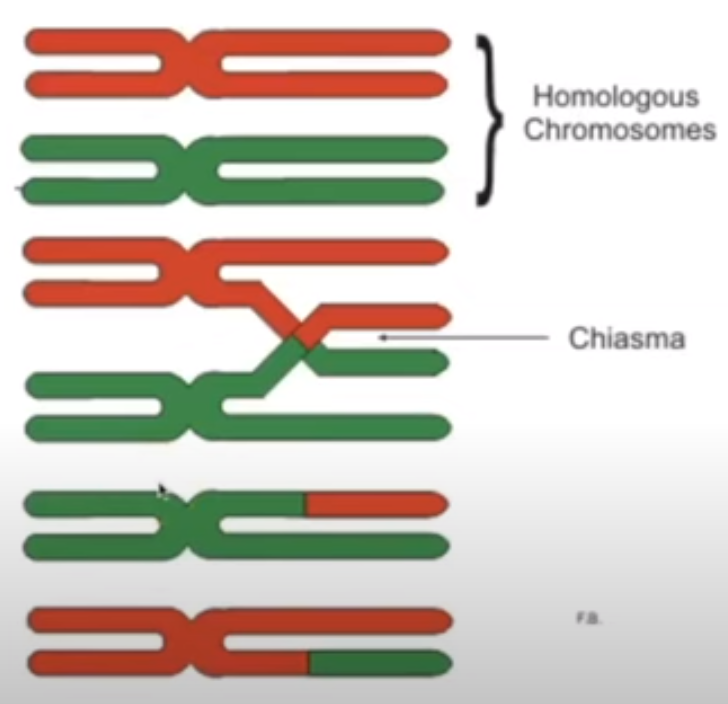
Independent Assortment
During metaphase I the homologous pairs of chromosomes line up opposite each other on either side of the equator
It is random on which side of the equator the paternal and maternal chromosomes of each pair align.
23 diff homologous pairs, so 8,388,608 different ways the pairs could assort themselves
As a result, each gamete receives different combinations of the maternal and paternal chromosomes
In metaphase II, the sister chromatids within one chromosome line up at the equator, their orientation on each side of the equator introduces another chance for increased genetic variation.
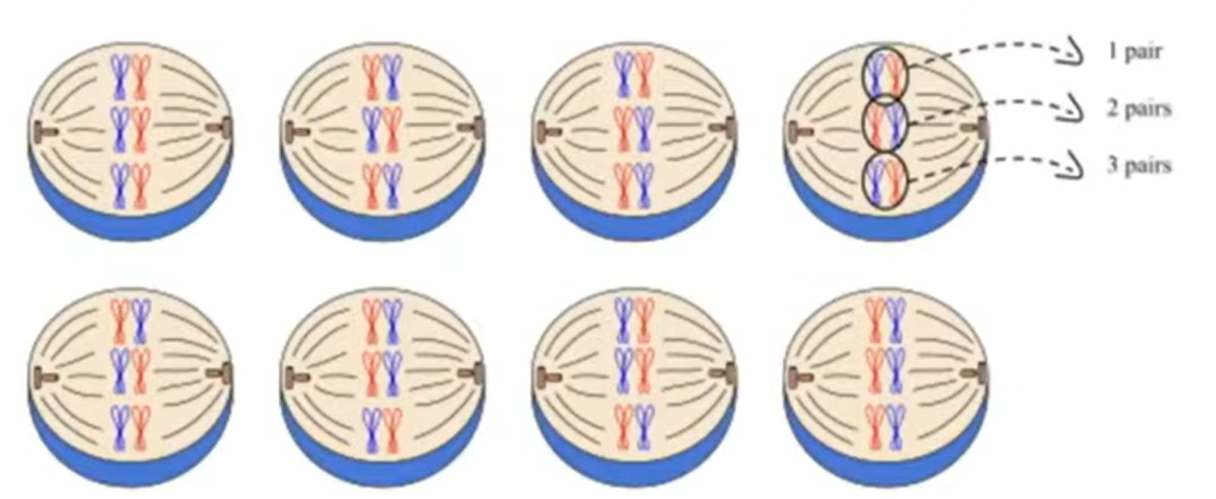
Organisation and specialisation of cells
Multicellular organisms are organised as follows:
Cells → Tissue → Organ → Organ System → Entire organism
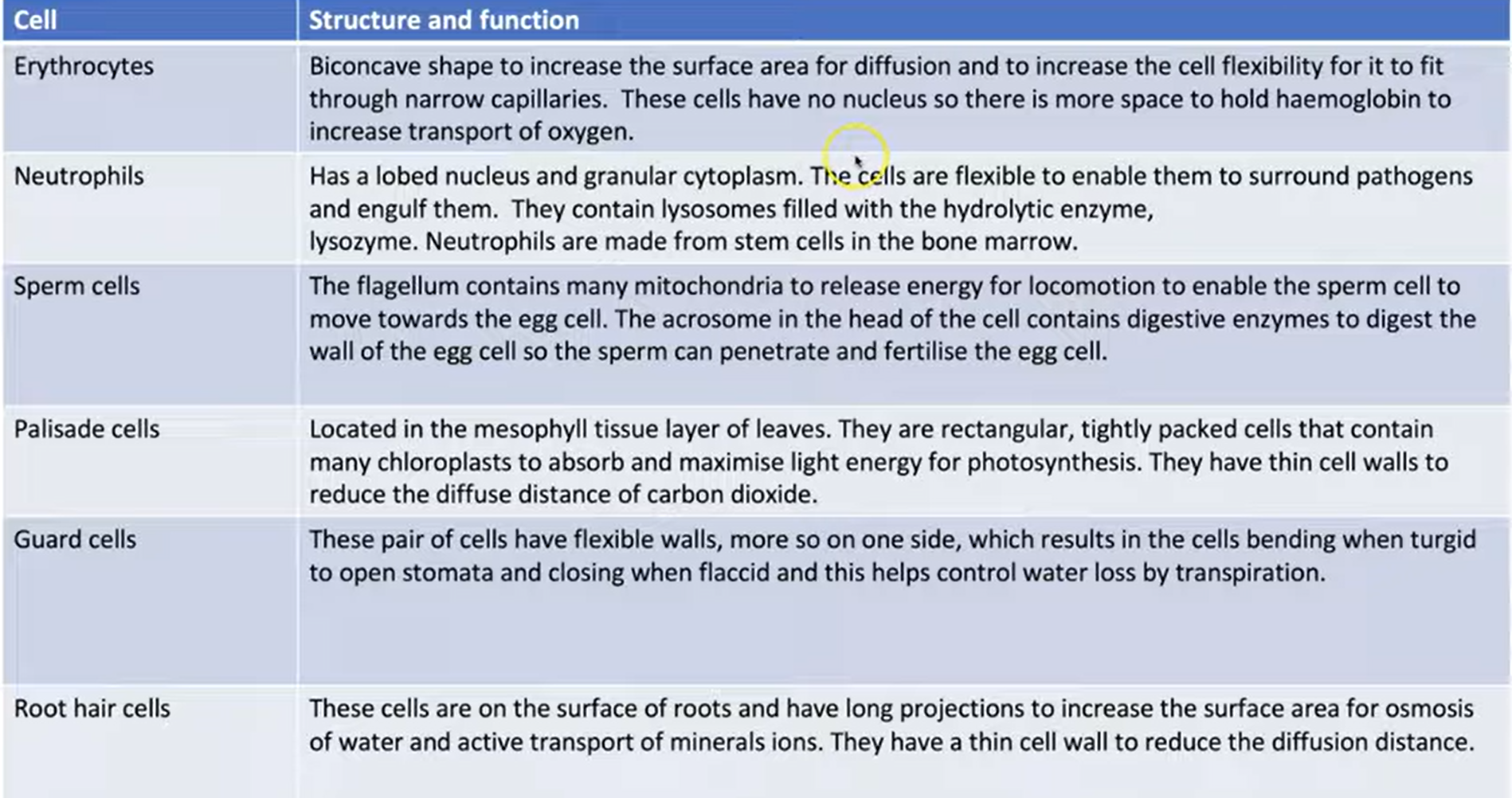
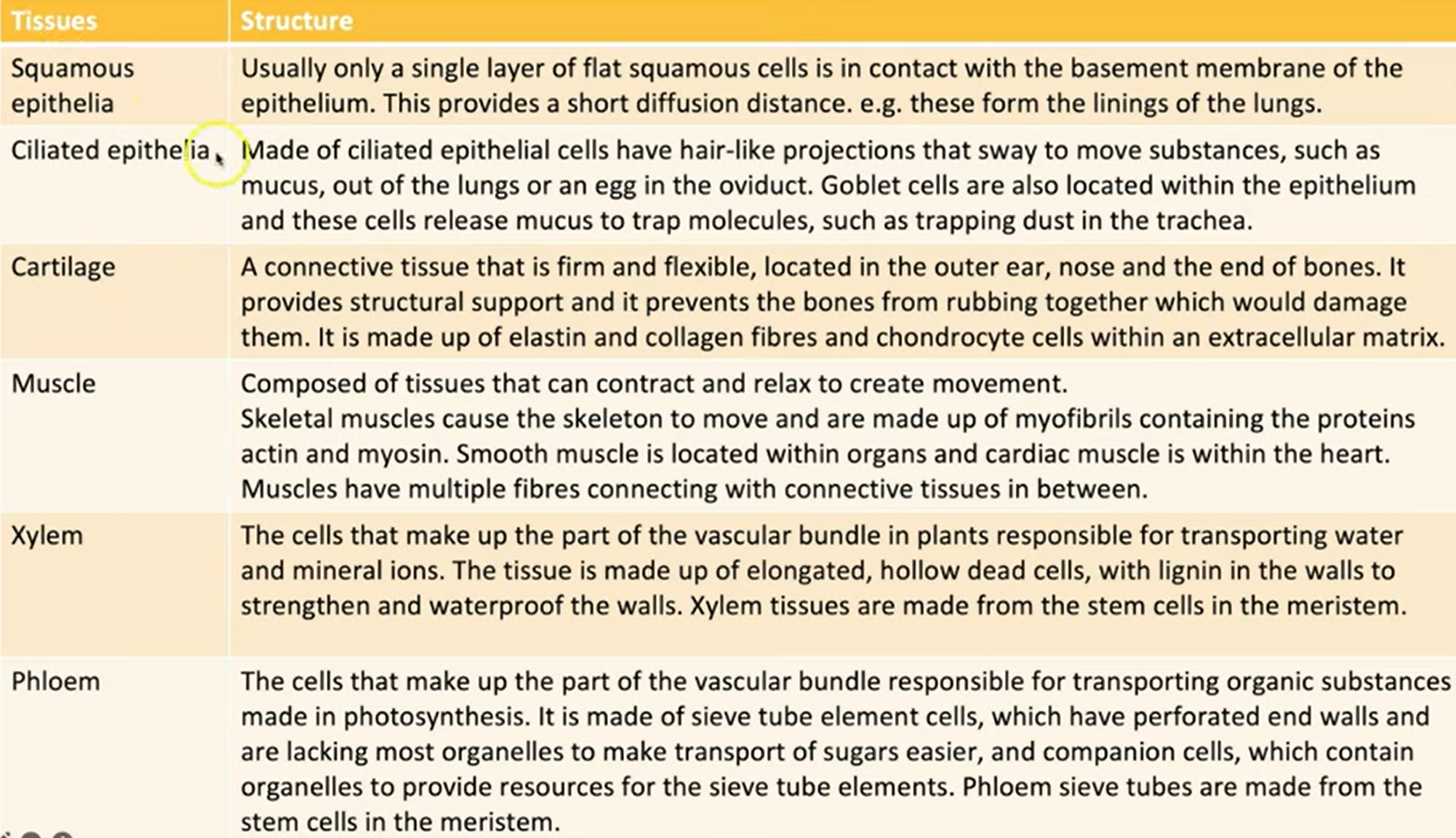
Stem Cells
are undifferentiated cells that can self-renew (continually divide) and become specialised
Different types of stem cells have different differentiation abilities these are:
Totipotent
Pluripotent
Multipotent
Unipotent
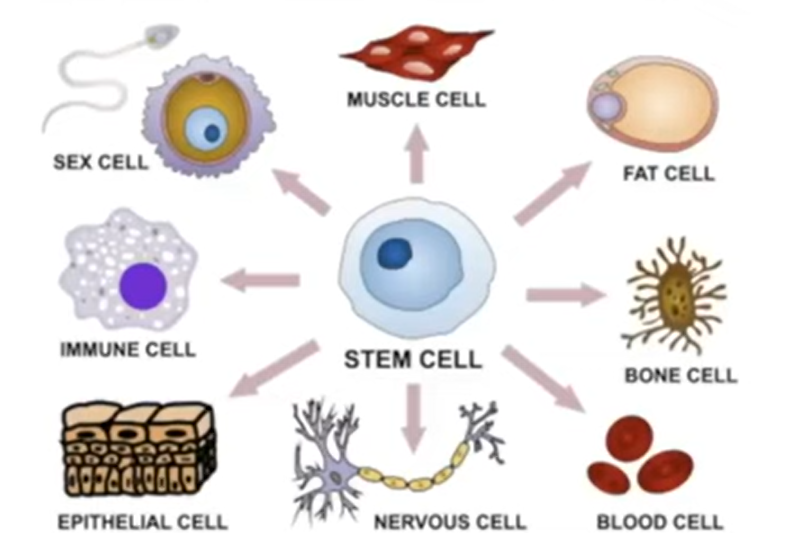
Stem cells
Totipotent cells can divide and produce any type of body cell. During development, totipotent cells translate only part of their DNA, resulting in cell specialisation. Totipotent cells occur only for a limited time in early mammalian embryos.
Pluripotent cells are found in embryos and can become almost any type of cell. For this reason, they are used in research with to prospect of using them to treat human disorders. There are issues with this as sometimes the treatment doesn’t work, or the stem cells continually divide to create tumours.
Additionally, ethically there is debate on whether it is right to make therapeutic clone of yourself to make an embryo to get the stem cells to cure a disease, and then destroy the embryo.
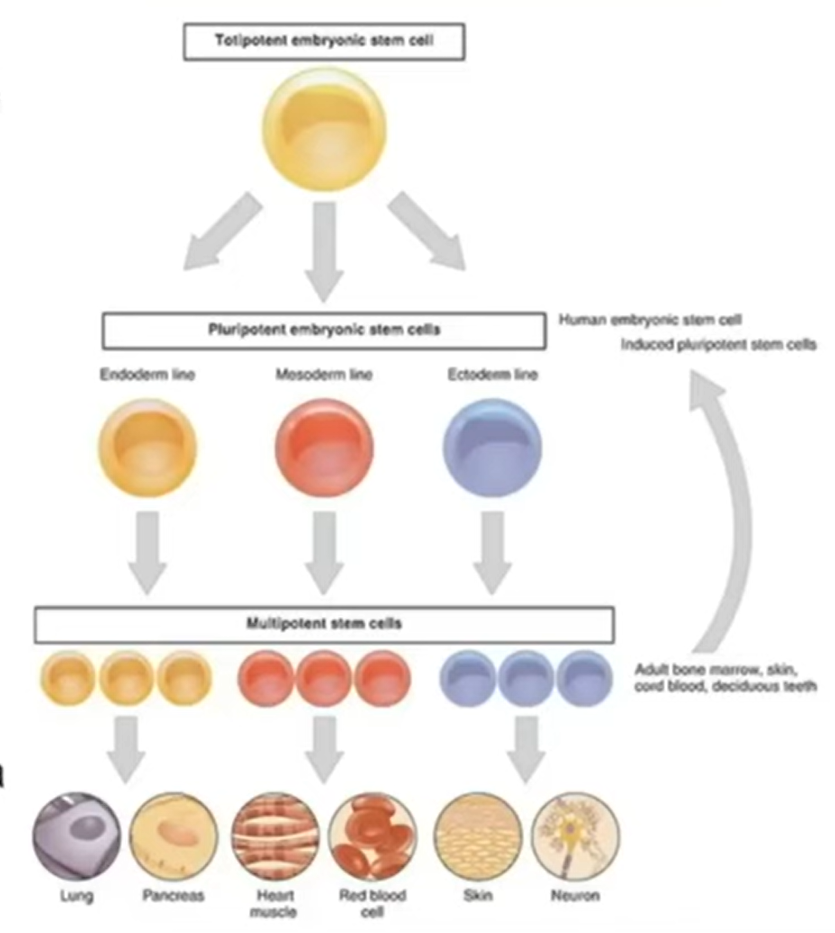
stem cells
multipotent and unipotent cells are found in mature mammals and can divide to form a limited number of different cell types
multipotent cells, such as in bone marrow, can differentiate into a limited number of cells, whereas unipotent cells can only differentiate into one type of cell
Potential use of stem cells
stem cells can be used in both research and medicine
These uses include:
Repairing damaged tissues
Treatment of neurological conditions such as Alzheimer’s and Parkinson’s
Research into development biology